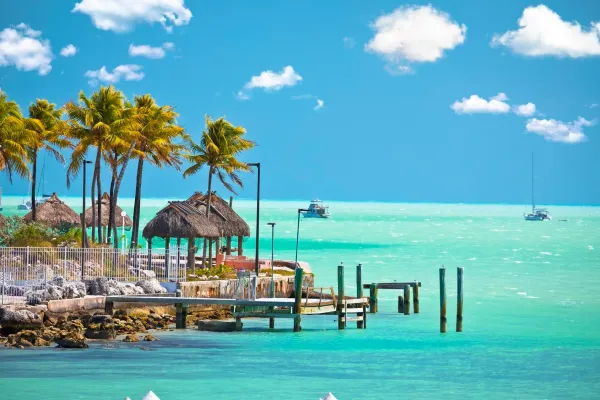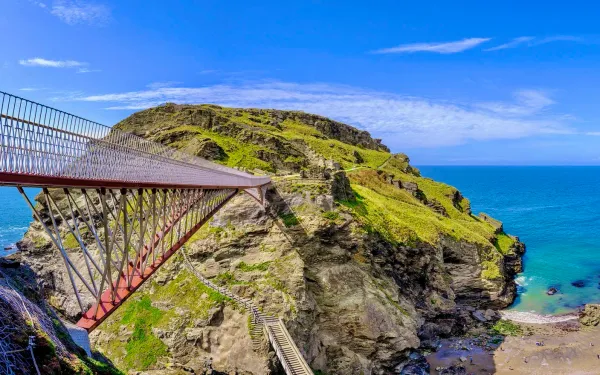Barcelona's City Center No Longer an Option for Cruise Passengers
Discover the latest travel updates: Cruise passengers visiting Barcelona will need to plan their itineraries differently as the city center is no longer accessible. Learn more about these changes and alternative options for your Barcelona cruise experience.

Barcelona is implementing significant changes to its cruise ship policies, which will impact both the cruise industry and travelers visiting the city. Starting on October 22nd, 2023, the city will no longer permit giant cruise vessels to dock at its iconic Muelle Barcelona Norte northern docks or the World Trade Centre, marking a notable shift in its approach to managing tourism and environmental concerns.
Under the new regulations, cruise ships will be redirected to the Moll d’Adossat pier, located south of the Catalonian capital. While this alternative docking location is just a 30-minute shuttle bus ride away from the city center, it signifies a change in the convenience of reaching Barcelona's most popular attractions for cruise passengers.
To address environmental issues and overtourism concerns, Barcelona is also imposing a stricter daily cap on cruise ship arrivals. The previous limit of 10 cruise ships per day will be reduced to just seven. This reduction aims to minimize the impact of large cruise ship traffic on the local environment and help maintain the city's charm and sustainability.
As travelers plan their upcoming cruises to Barcelona, it's essential to stay informed about these significant changes in docking locations and daily arrival limits to ensure a smooth and enjoyable visit to this vibrant and culturally rich city.
What are the reasons behind Barcelona's cruise ship limitations?
Barcelona, known as Europe's busiest cruise port, has annually greeted over 2.7 million passengers, making it a hub for cruise ship activity on the continent. However, this prominence comes with significant environmental and quality-of-life concerns. In a recent study conducted by the Transport & Environment NGO group, Barcelona was notably labeled as the worst cruise port for air pollution in Europe, reflecting the growing urgency to address these issues.
The city's inclination towards limiting cruise ship operations has been a subject of discussion for some time. In 2018, an agreement was reached between the Port of Barcelona and the city council, aiming to mitigate the adverse effects of the cruise industry on local residents and the environment. These discussions gained momentum when, in 2022, then-Mayor Ada Colau voiced her support for implementing a daily cap on cruise ship arrivals. She highlighted that a significant portion of cruise visitors spend only a brief four hours in the city, contributing minimally to its economy while creating substantial mobility challenges. Mayor Colau emphasized the need to restrain this industry's growth for the city's benefit, as reported by The Times.
Beyond the aim to alleviate the impact of overtourism on Barcelona's residents, the new regulations also hold the promise of significantly reducing exhaust emissions within the city center. As the city navigates its relationship with the cruise industry, these measures aim to strike a balance between preserving Barcelona's unique character and environmental sustainability.
The northern wharf of Barcelona is set for a revitalization
Barcelona Nord wharf, previously a bustling hub for approximately 340 cruises and ferries annually, recently hosted its final ship on October 2nd. This marks a significant shift in the city's maritime landscape, as these vessels will now be directed elsewhere. This strategic redirection will result in the freeing up of approximately 630 meters of quay line, paving the way for a transformative project that encompasses the creation of expansive "new public spaces." The Port of Barcelona has announced plans to utilize this reclaimed space to craft an impressive 13,600 square meters of vibrant and accessible public areas.
Barcelona's residents can anticipate enjoying these rejuvenated public spaces by the following autumn, coinciding with the 37th America's Cup sailing race, providing a promising boost to the city's urban environment.
In addition to these exciting developments, the Port of Barcelona is making significant investments in sustainability. An impressive €80 million is being allocated towards the electrification of the Adossat wharf. This ambitious project aims to eliminate emissions produced by ships while they are berthed at the port, contributing to the city's commitment to cleaner and more environmentally responsible maritime practices. Barcelona continues to evolve, seeking to strike a balance between preserving its maritime heritage and embracing sustainable urban development.
Which other destinations are implementing restrictions on cruise ship arrivals?
Barcelona has been observing and drawing lessons from the policies of other global ports. A notable example is the Spanish city of Palma. Just a year ago, Palma set a daily limit on the number of ships allowed to dock, capping it at three. Furthermore, of these three, only one ship is permitted to have a passenger capacity exceeding 5,000.
Europe has witnessed a growing sentiment against large cruise ships, particularly in its historically significant locations. Venice, the iconic Italian city known for its picturesque canals, took a bold step in 2021. The city authorities prohibited large cruise vessels from anchoring within its historic heart. This decision was influenced by the looming threat from UNESCO. The global body cautioned Venice with the possibility of marking it as an endangered site if measures weren't taken against the cruise ships. The primary concern was the damage these massive vessels were inflicting on the delicate lagoon ecosystem.
Marseille, a bustling port city in France, has also voiced concerns over the cruise ship industry. The city's mayor has been candid in her criticism, asserting that the industry's contribution to air pollution is "suffocating" the city. This sentiment isn't isolated to Marseille. In the French town of Douarnenez, situated in Brittany, local protesters made their feelings clear. As cruise passengers disembarked, they were met with chants of “shame on you!”, “you are not welcome here”, and “please return to your homes”.
Several other European destinations are echoing similar sentiments. Amsterdam, the enchanting city of canals; Santorini, a gem in the Aegean Sea; and Dubrovnik, the historic Croatian city, have all implemented stricter regulations on cruise companies over the past few years, reflecting a broader European trend.
For avid travelers and cruise enthusiasts eyeing Barcelona as a destination, it is imperative to remain updated on these pivotal policy changes. By doing so, they can ensure their journey to this dynamic, culture-rich city remains seamless and memorable.





